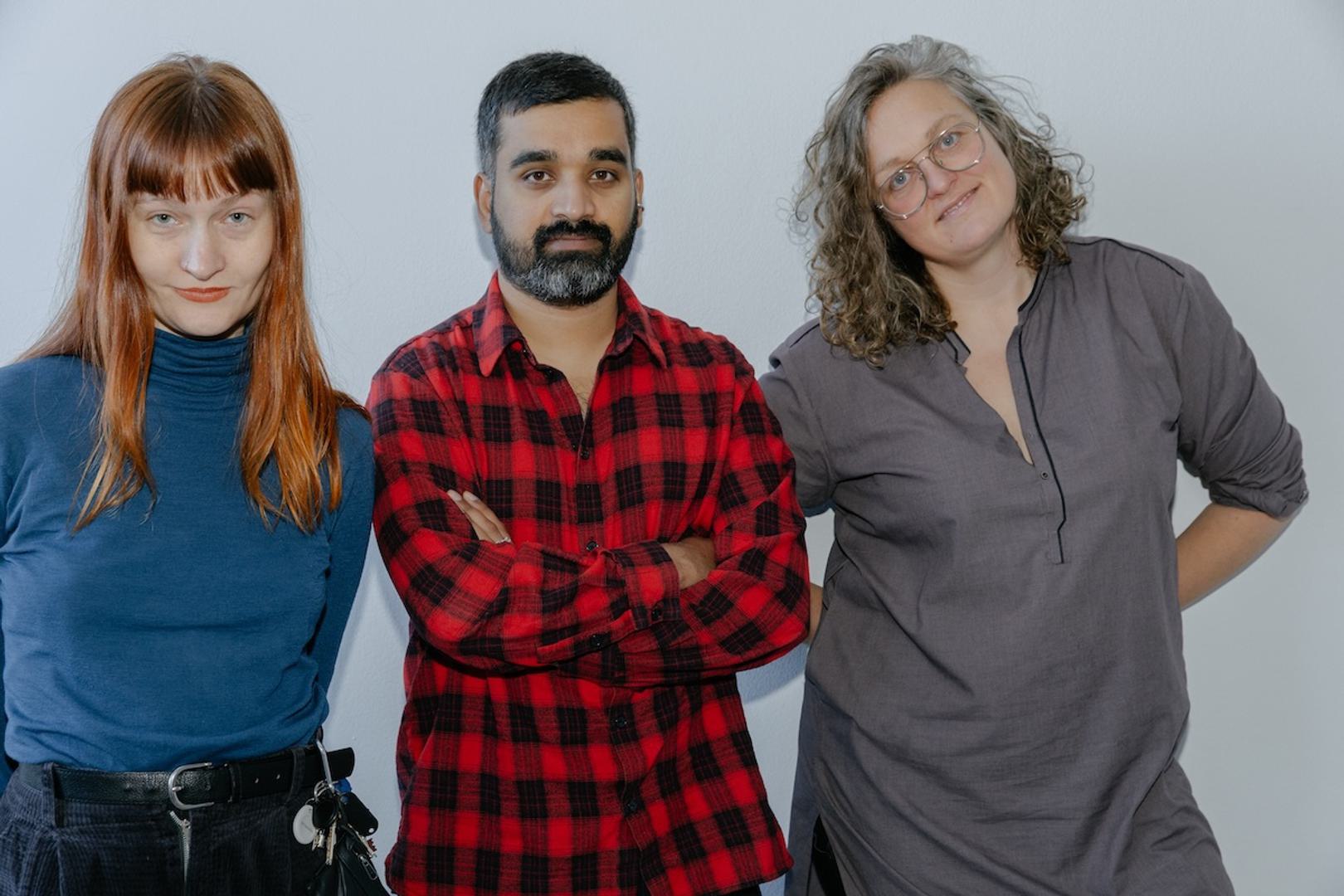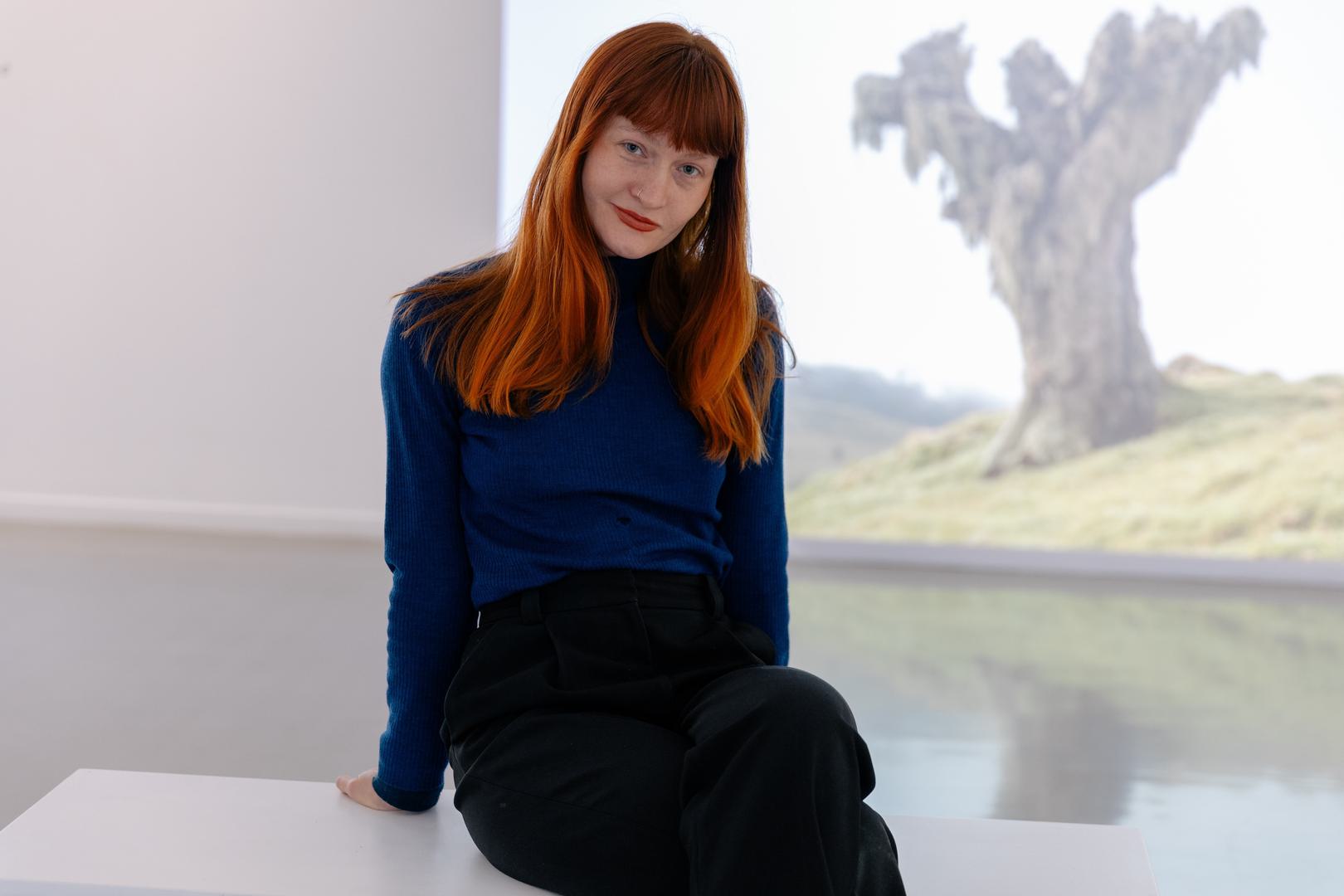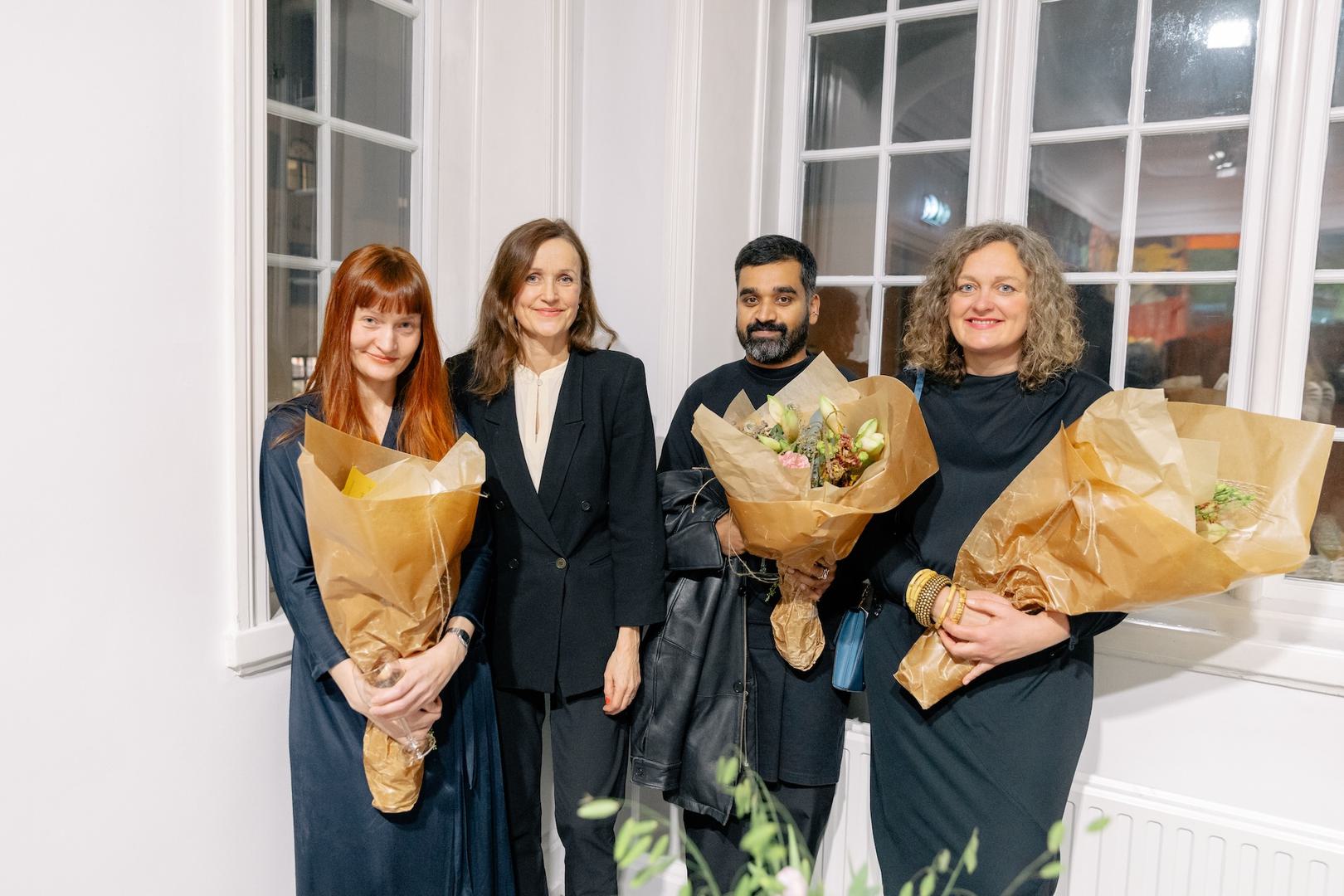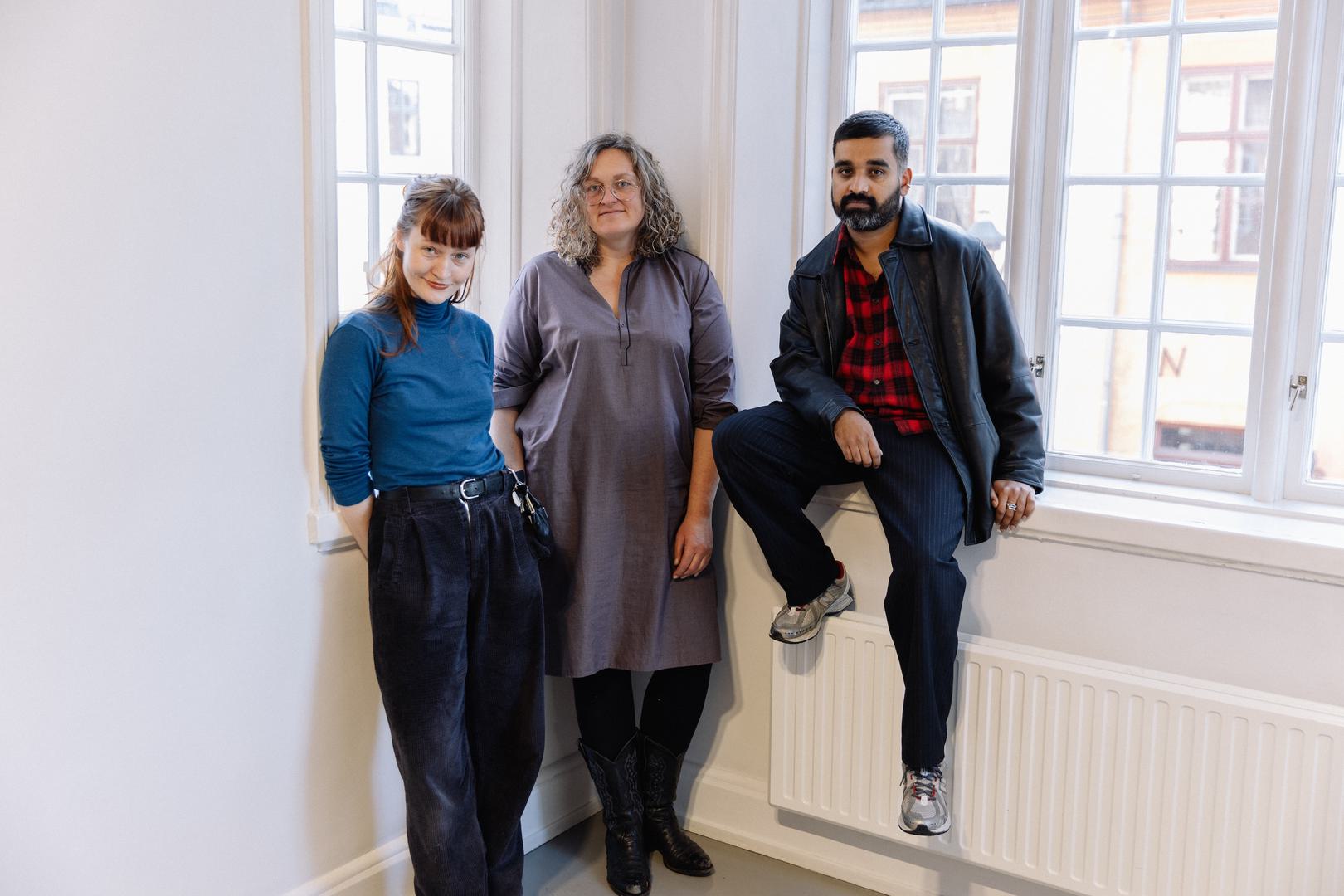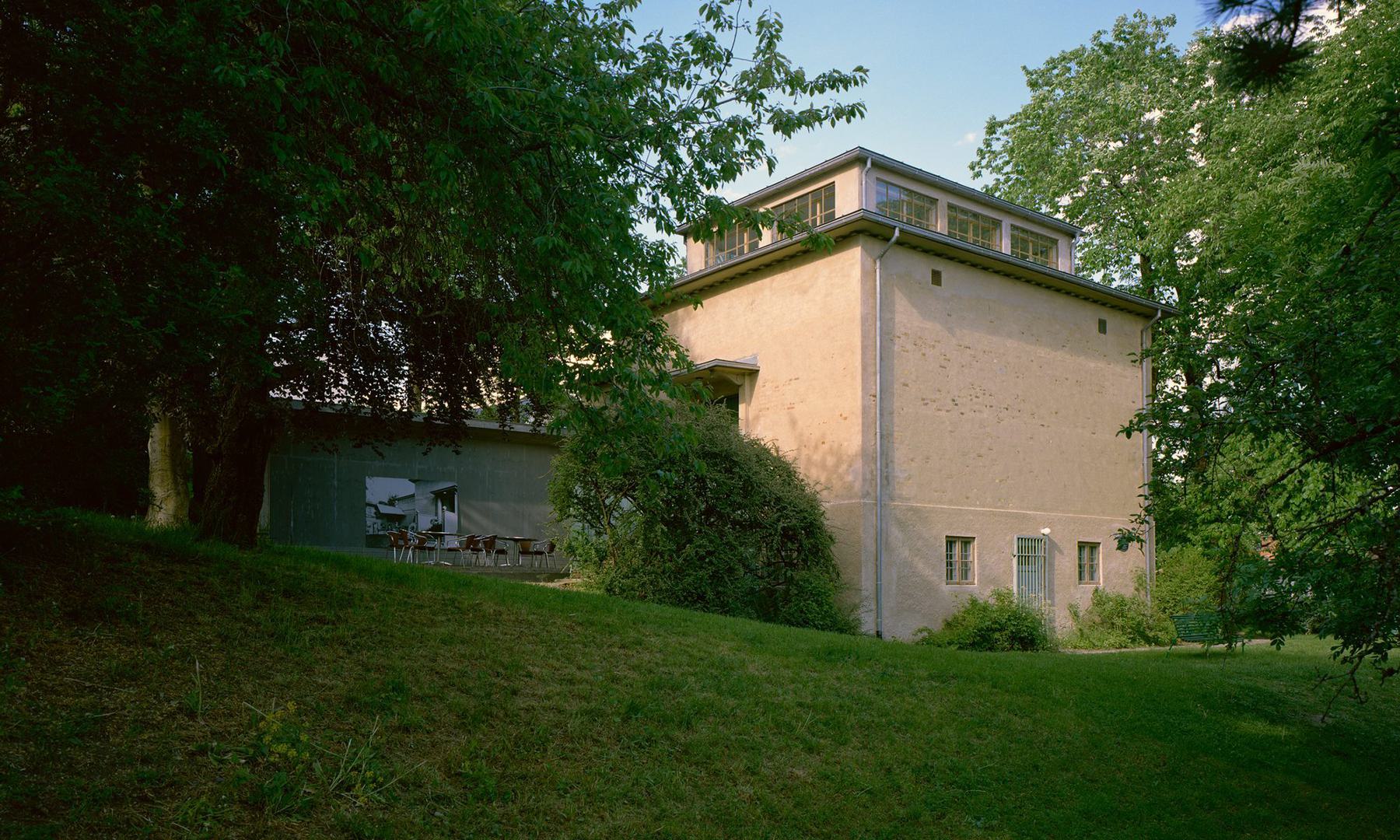Sparebankstiftelsen DNB Grant Exhibition 2024

Eline Benjaminsen, The Flora of Finance, Sparebankstiftelsen DNB Grant Exhibition 2024. Photo: Tor S. Ulstein
Oslo Kunstforening is pleased to present Sparebankstiftelsen DNB Grant Exhibition 2024, with Eline Benjaminsen, Margrethe Kolstad Brekke and Nikhil Vettukattil.
The annual grant exhibition has been organized by Oslo Kunstforening since 2008 with support from Sparebankstiftelsen DNB. New as of this year, the recipient of the grant will also be offered a studio residency at Edvard Munch’s former studio at Ekely. This year’s jury consists of Ana María Bresciani, curator at KORO, Pedro Gómez-Egaña, visual artist and professor at the Oslo National Academy of the Arts, Sandra Mujinga, visual artist and musician, Axel Wieder, director of Berlin Biennale, and Elisabeth Byre, artistic director of Oslo Kunstforening.
The Sparebankstiftelsen DNB Grant for 2024 is awarded to Eline Benjaminsen for the installation The Flora of Finance. Read more.
Previous grant recipients are Linda Lamignan (2023), Kim Hankyul (2022), Anne Haugsgjerd (2021), Berivan Erdogan, Hanni Kamaly and Kjetil Skøien (2020), Germain Ngoma (2019), Eirik Sæther (2018), Emilija Škarnulytė (2017), Tor Børresen, (2016), Andrea Bakketun and Christian Tony Norum (2015), Ingrid Lønningdal (2014), Sandra Mujinga (2013), Marie Buskov (2012), Kaia Hugin (2011), Ann Cathrin November Høibo (2010), Ignas Krunglevičius (2009), Ellisif Hals and Susanne Skeide (2008).
“This year’s edition showcases three artists who work with media such as photography, sound, video and textile. In their practices, they explore contemporary issues related to economic perspectives, food production, and utopian strategies – with the climate crisis as a backdrop.”

Eline Benjaminsen
Eline Benjaminsen (b. 1992, Oslo) lives and works in Oslo. Benjaminsen holds a BA in photography from the Royal Academy of Art, The Hague. She has recently exhibited at venues such as Radius CCA, Delft, Netherland (2024), KunstHaus Wien, Austria (2024), Wereldmuseum Amsterdam, Netherland (2023).
Margrethe Kolstad Brekke
Margrethe Kolstad Brekke (b. 1979, Bergen) holds an MA in Fine Art from The Art Academy in Bergen (2014), and has exhibited at venues such as Flag-no-flag, Reggio Emilia (2021), Muzeion, Bolzano (2019), Hordaland Kunstsenter, Bergen (2019), Kunstnerforbundet, Oslo (2017), in addition to venues organised by the Arctic Art Institute. Brekke has also developed several interdisciplinary collaborations such as the Luftballett project (2015-2018) and Rjukan Solarpunk Academy (2019-).
Nikhil Vettukattil
Nikhil Vettukattil (b. 1990, Bengaluru) holds a BA in Fine Art from Central St. Martins in London and an MA in Contemporary European Philosophy from Kingston University, London. They are part of the Institute for Scene Experiments, and recent exhibitions include Hothouse Flowers, Podium, Oslo (2024), Postproduction, Studiengalerie 1.357 Goethe University, Frankfurt (2023), Contaminators, FELIX GAUDLITZ, Vienna (2023) and Claustrophobia Alpina III, Ford, Geneva (2023).
Nikhil Vettukattil
Nikhil Vettukattil (b. 1990) works in a wide range of expressions, most commonly using remix of existing material as a method from which to form new compositions. Vettukattil’s work Defund the Police, raises questions about our relationship to time. How do we understand it, how does it shape our perception of history, and what is highlighted as representative?
The installation is simultaneously familiar and alien. In a space resembling a distorted living room, three leather sofas in different colors face separate TVs. Around the room are wall-mounted and standing speakers, a painting with a partially painted-over motif, and a bookshelf with a long line of bound black books. On the floor lies broken glass, and a strobe light is activated for one second every ten minutes, creating a red flash.
On the three screens, the work Decade 2014–2023 shows a vast amount of video material collected by Vettukattil over the past ten years, presented in chronological order. Archival footage from protests and political movements has been mixed with clips from popular culture, fictional films, TV, and images of art. The soundtrack is a blend of news, edited pop songs, lectures, and political speeches. The sound alternates between harmony and dissonance, creating a layered soundscape that is interrupted by brief moments of silence. The work connects objects and events that are often viewed in isolation rather than as part of a network of interrelated global processes that influence and define the contemporary moment: environmental movements, liberation struggles, Indigenous rights, decolonization, feminist and LGBTQI movements. Vettukattil references writer Vincent Bevins, who says that one of the defining characteristics of our time is global uprisings and protests. Data from the think tank Carnegie Endowment for International Peace indicates that since 2017, 147 countries have experienced significant protests, which has been steadily rising from 2008 until 2020. The last comparable years of global unrest were in 1917 and 1968.

Nikhil Vettukattil, Defund the Police, 2024. Photo: Tor S. Ulstein
Century consists of 100 books from 1922-2021, with a novel for each year. All the books have the same anonymizing black cover, with the year on the spine. The audience is invited to browse the bookshelf and choose a book to read. The work challenges established truths about which books are considered important, highlighting how marginalized groups and the Global South are often excluded from a Western canon.
The title Defund the Police refers to a concept and slogan that has gained increasing attention and support worldwide. Specifically, it is a call for the resources used on policing and incarceration to be reallocated and used in sustainable ways, such as for education and support programs. What if funds used to punish were instead used to educate, support, and address the root causes of crime? In a broader sense, from a global perspective, it refers to the systems that enforce law and order. It relates to border control and surveillance, the criminalization of protesters, migrants, and the homeless, and the privatization of property – in a world with increasing inequality in the distribution of resources.
Margrethe Kolstad Brekke (b. 1979) is a textile artist living in Rjukan, Telemark. She works at the intersection of aesthetics and activism, notably as part of the artist collective Rjukan Solarpunk Academy. Through her interdisciplinary and process-based practice, Brekke engages with climate issues: How can art contribute to promoting sustainable transition processes? What possible choices lie ahead for reaching the UN’s climate goals, and where do the paradoxes related to this arise?
The installation Solar Maximum Diorama is a monumental textile work, the first in a series that Brekke will develop throughout 2025. The work consists of five main motifs spanning 45 square meters. The banners are richly detailed and painted or embroidered with repetitive figures depicting animals, vegetation, and geometric forms. The textiles are part of Brekke’s own archive collected over the years; some she created herself, others were purchased second-hand or inherited from relatives. She sees these textile works as an extension of the feminist and activist history of textile art, as well as of folk art, with its rich ornamentation and color schemes where Telemark holds a unique position in the Norwegian context.
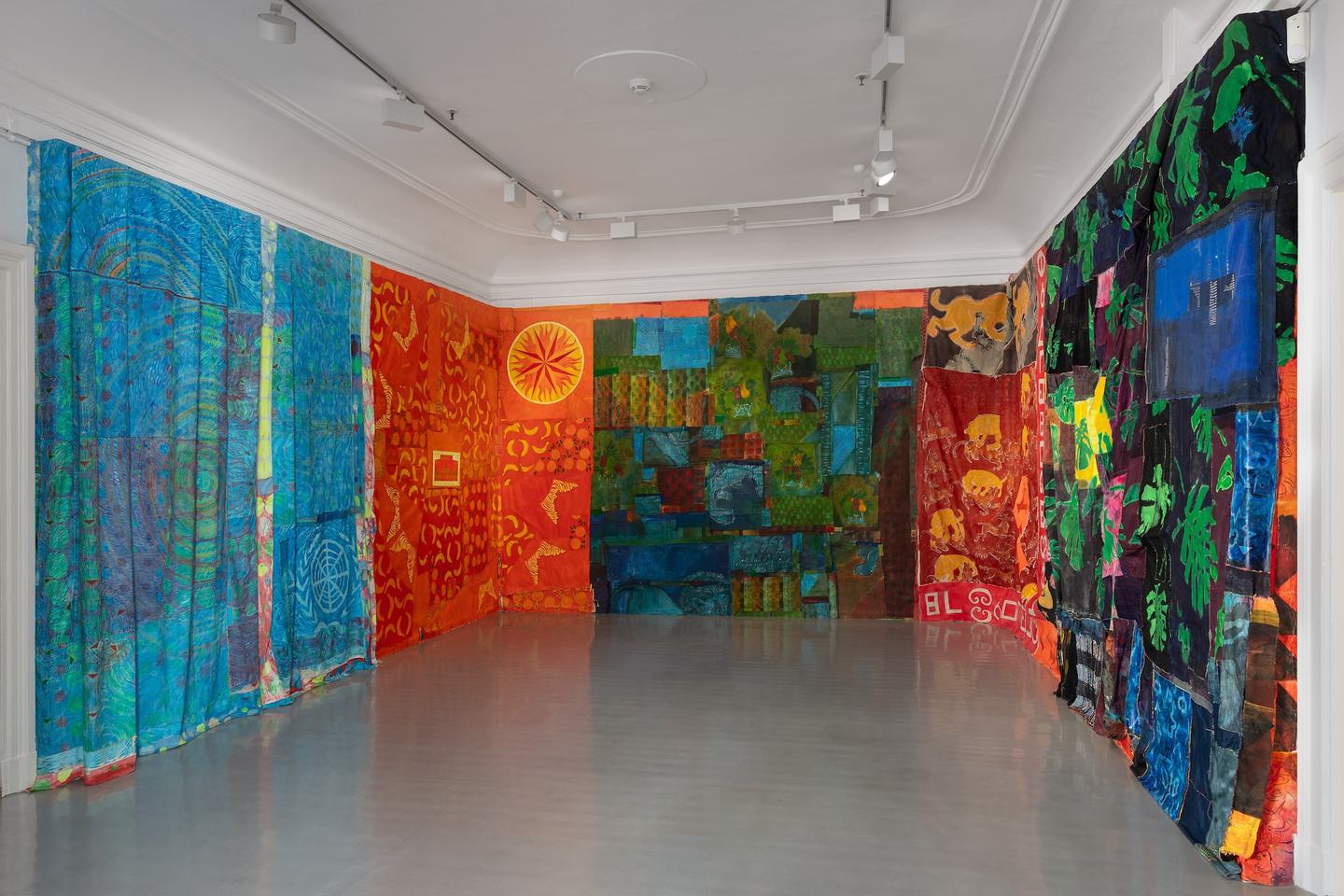
Margrethe Kolstad Brekke, Solar Maximum Diorama, 2024. Photo: Tor S. Ulstein
Solar Maximum refers to a concept that can be associated with both a scientific and a spiritual perspective. Scientifically, it is tied to the peak of solar activity during the sun’s 11-year solar cycle. From a spiritual perspective, high solar activity is also understood as increased cosmic energy that can affect human consciousness and social change. According to researchers, the sun will be in its most active phase from late 2024 to early 2026, coinciding with Brekke’s ongoing project. Diorama refers to a three-dimensional, scenographic representation, typically of museum objects, often created for educational purposes. Brekke states: ”The work serves as a future diorama set in the immediate present. It addresses large, open questions concerning our time on the planet. We know that the choices we make today will have enormous consequences for all life on Earth, the biosphere, and the atmosphere in the years to come.”
The project is inspired by future scenarios drawn from Shared Socioeconomic Pathways (SSP) 1-5, the sixth assessment report from the UN’s Intergovernmental Panel on Climate Change, in which international researchers and experts describe how social, economic, and environmental conditions might develop in the future – from a sustainable future to one marked by increasing division and resource scarcity. To bridge the motifs in the diorama and the climate report, Brekke collaborates with Kristin Guldbrandsen Frøysa, Energy director at the University of Bergen. In a podcast accompanying the installation, Frøysa comments on the diorama’s motifs, thus entering a dialogue with Brekke’s visual works. Together, they seek to broaden the perspective surrounding the crucial transformation processes of our time.
Alongside Brekke’s continued development of the project, her collaborator Daniel Zoltan Nyiri from Rjukan Solarpunk Academy – the artist collective that emphasizes the significance of art and artists as pioneers in the climate struggle – will host a series of conversations. These include interviews with relevant professionals and will be published as fanzines and podcasts on Rjukan Solarpunk Academy’s website.
Eline Benjaminsen
Eline Benjaminsen (b. 1992) reveals the often invisible and hidden spaces where financial transactions take place. In this exhibition, Benjaminsen presents The Flora of Finance, an installation featuring two films that examine how financial practices restrict access to land and natural resources, illustrating the costs and consequences for landscapes and the livelihoods of those affected. Benjaminsen fuses techniques of traditional documentary photography with experimental processes, often combining video, graphic prints, photographs, and text. Benjaminsen’s material experiments extend to genre, from familiar follow-the-money narratives, to the invention of cli-fi-fi (Climate Finance Fiction) – a genre coined together with collaborator Dayna Casey. Cli-fi-fi is related to sci-fi (science fiction) and cli-fi (climate fiction), but where these tend to show fictional and futuristic scenarios, cli-fi-fi documents the ongoing encounters between financial practices and climate change.
The language of finance is filled with terms derived from flora, with hedging perhaps being the most prevalent. Broadly speaking, hedging refers to strategies designed to protect wealth and assets from risk. The work Flora: Hedging (a.k.a. hedge heist) is a film created in collaboration with Casey. The film takes us from a suburb in the Netherlands to tax havens like Bermuda, the Cayman Islands, and Malta. The camera follows the artists as they clip branches from massive thuja hedges surrounding the estates of hedge fund managers and others who reportedly protect their wealth in tax havens. The addresses visited were obtained from tax haven leaks (Tax Haven Archive: International Consortium of Investigative Journalists). Shell companies in tax havens are legal under Dutch law, while stealing branches from someone’s hedge is illegal and can result in fines or even prison time. The film coincides with the book Collapsed Mythologies – a Geofinancial Atlas by Benjaminsen and Casey, which is being launched during the exhibition. In this book, the artists delve into expressions and jargon used in finance and business that reference both the natural and the supernatural.

Eline Benjaminsen, The Flora of Finance, 2024. Photo: Tor S. Ulstein
The film Footprints in the Valley is a collaboration between Eline Benjaminsen and Elias Kimaiyo – a land rights advocate and a leader of Kenya’s indigenous Sengwer people. Kimaiyo has been actively involved in the fight against greenwashing of land for economic gain, where the carbon storing capacity of treescapes is traded as a commodity in a global marketplace. Together, Benjaminsen and Kimaiyo attempt to understand this illusion of value and demonstrate how transactions like these result in the displacement of indigenous communities and others who rely on the land for their livelihoods. The starting point for the film was Benjaminsen’s own investment in a forest conservation project, where she paid €11.25 for a certificate from an offsetting dealer based in London. The certificate stated that a tree in Kenya’s Great Rift Valley would offset one ton of carbon emissions. In Embobut, a rainforest north of the Valley where Kimaiyo is from, various international conservation projects have been eager to implement similar carbon trading schemes. This has led to violent evictions of the indigenous population, as they are accused of being illegal occupants of the forest.
Norway is one of the largest sovereign investors in forest conservation projects in the Global South, and under the Paris Agreement, Norway’s Ministry of Climate and Environment currently has a pending budget of 8.2 billion NOK earmarked for carbon offset purchases. Through various representational approaches, Benjaminsen and Kimaiyo measures the landscapes of Embobut, considering it through the lense of different value-sets – both that of a market perspective that counts carbon credits, and also that of the Sengwer inhabitants. Individual trees and landscapes are digitally observed and depicted, alluding to processes used to measure carbon storage in forests.
The films created in connection with the exhibition were produced by Thomas Nikolai Olsen, with support from Sparebankstiftelsen DNB.

